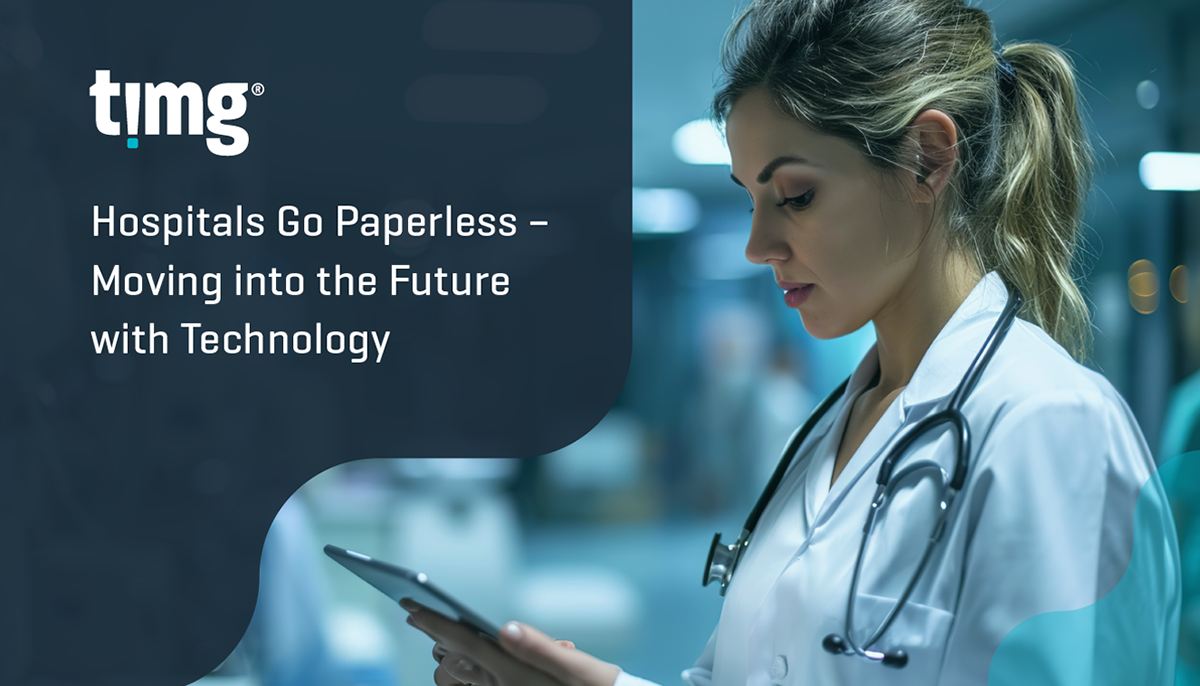Hospitals Go Paperless – Moving into the Future with Technology
Technology Setting the Future for Hospitals. The Digital Health Record is set to deliver better patient outcomes into the future.

Hospitals Go Paperless – Moving into the Future with Technology
We’ve seen technology revolutionise an array of industries. Right when we get comfortable with one technology, there’s another around the corner helping our competitors stay ahead. The medical industry is not immune to this cycle, whether they are early adopters or the last to embrace a trend.
The integration of data and technology in healthcare is enabling hospitals to go paperless, moving them into the future. As a direct result, the rapid evolution of the Digital Health Record, offers improved data management and ultimately better patient outcomes. But with these streamlined processes and fast data sharing come heightened security risks. Healthcare organisations are increasingly targeted by cyber-attacks because their information and data are rich in personal and sensitive information. It’s therefore imperative for the industry to bolster its cybersecurity measures to protect patient data because the cost of cyber-attacks extends beyond financial loss, impacting patient privacy and the integrity of healthcare services.
Health Care Security Risks
In 2024, Australia continues to face significant cybersecurity threats, with government departments experiencing a concerning number of security breaches. Recent audits have uncovered vulnerabilities in state databases, including instances of insufficient password protection allowing unauthorised access to medical records.
To protect sensitive information, individuals and organisations must stay vigilant and implement strong security measures. Legislative updates to the Privacy Act and Health Records Act have strengthened cyber defenses, enhancing patient trust in the healthcare system’s data privacy commitment.
The transition to electronic health records and digitised physician entries has revolutionised the healthcare workforce, leading to improved organisation, efficiency, and adaptability. The sector’s rapid adoption of digital technology has been instrumental in enhancing service delivery and patient care. In 2024, patient care remains the cornerstone of healthcare services. The emphasis on time efficiency has only grown, with technology playing a pivotal role in streamlining administrative tasks. Today, healthcare professionals can leverage advanced digital systems that reduce paperwork to mere minutes per patient, allowing for more direct patient interaction and care.
Embracing Big Data
Modern solutions have transformed big data management into a seamless aspect of medical practice, offering unprecedented administrative efficiency and significant cost and time savings.
Digital Workflow Integration
Routine processes, such as processing test results or completing forms, are now more efficient thanks to secure, integrated digital workflow systems. Moreover, with the majority of patient information readily available in a practice’s digital administration system, the need for repetitive data entry is eliminated. Consequently, this integration ensures that multiple forms for a single patient are auto-filled, saving time and reducing errors. The automation of medical records management has minimised the need for manual recording, filing, and document retrieval. As a result, easy access to digital records not only saves time but also enhances the accuracy of medical information.
Digital Transformation
The digitisation of patient files and documents has significantly cut down on the costs and space required for physical storage. The recently formed partnership between InfoMedix and TIMG is providing healthcare businesses and organisations integrated solutions for document scanning, physical record storage and digital health records management. This collaboration will help healthcare organisations manage the digitisation journey to a fully integrated Electronic Health Record, offering benefits like advanced scanning, OCR, and meticulous quality assurance for optimal health outcomes.
For heightened security and protection of patient records, secure offsite storage solutions offer robust online tools for managing medical file inventories, ensuring healthcare professionals can focus on patient care without the burden of administrative tasks.
TIMG’s bespoke digital solutions continue to empower healthcare providers, enabling them to dedicate their efforts to patient care, supported by efficient data management and administrative processes.
 Your browser is very old. It's so old that this site will not
work properly as it should.
Your browser is very old. It's so old that this site will not
work properly as it should.